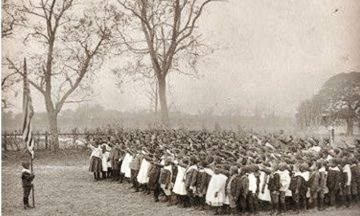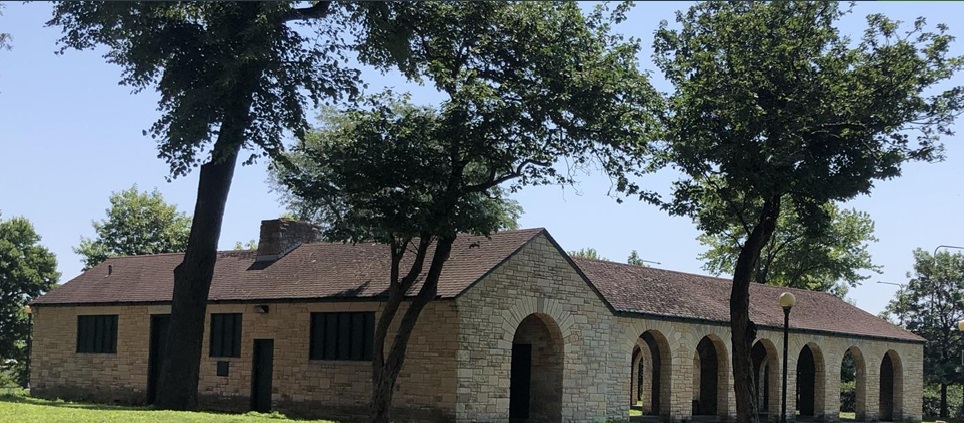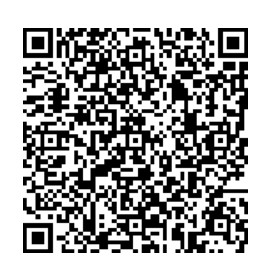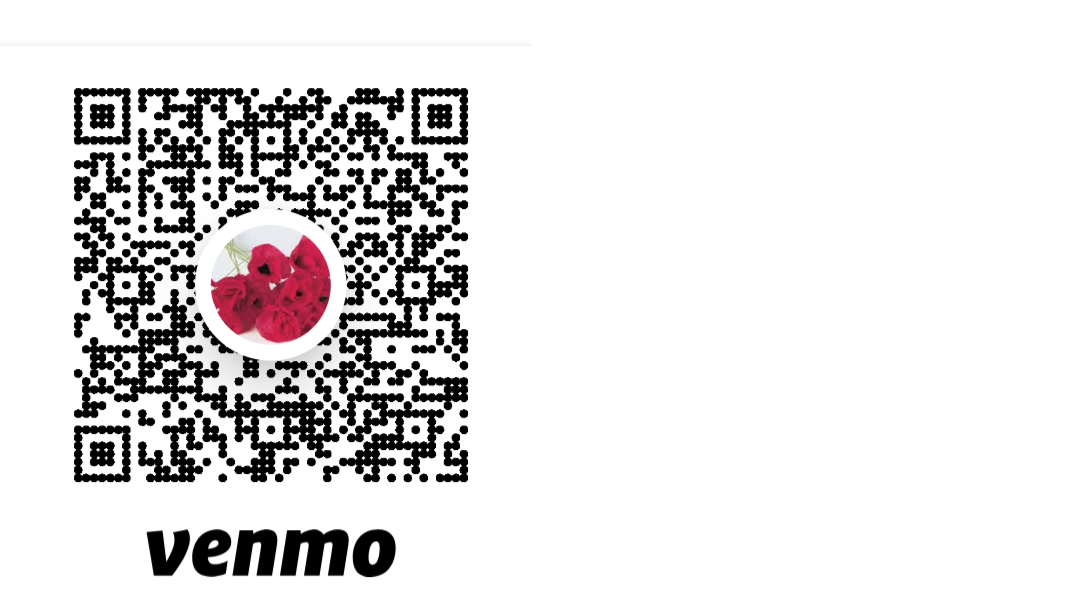Memorial Day 2025:
A traditional ceremony
to honor our fallen heroes
The Chicago neighborhood of Hyde Park held its Memorial Day observation in the historic Iowa Building on May 26, 2025 starting at 9:30 a.m. Central Time. This ceremony was free and open to the public, and about 40 people attended.
Prior to the Poppy Ceremony, A Quiet Vigil for Loss and Remembrance"took place Promontory Point from 8:00 to 9:00 a.m.
CHOOSE THE BUTTONS BELOW DONATE, CONTACT US, READ ABOUT OUR DONORS AND SUPPORTERS, or view our new photo GALLERY and read The Script. Or simply keep scrolling to read about the Legacy of Memorial Day, the significance of the Rembrance Poppy, and the history of the Iowa building.
If you are interesting in being an active part of Memorial Day in Hyde Park, please contact us as soon as possible to find out more about what was involved in organizing and presenting the Poppy Ceremony in 2025.
Thank You for Visiting
We hope you will feel inspired to participate in organizing next year's service.
If you want the Poppy Ceremony to be an annual tradition in Hyde Park,
here are a few of the ways you can make this happen.
You'll find additional details below in the section titled "More Information."
Start talking to your friends, coworkers, and encourage them to get involved. Ideally, some existing organization will take on this project, but even so, there are a lot of moving parts, and many hands make light work. We will provide you with a detailed outline of what we learned in organizing the service for 2025, and we'll even give you the script & music files.
The Iowa Building was a perfect venue. It is managed by the Chicago Parks District, and an Special Event Permit will be required to rent it again. The application process starts on November 1, and you will want to be ready to file. We can guide you through that process.
The income from Poppy Donations goes entirely to the American Legion. This means the organizers are responsible for park fees, insurance, website payments, and office supplies including postage. If you or your group can fund some of the expenses, volunteers can concentrate on promoting the event. (Our GoFundMe account for 2025 is still open.)
What You Should Know
Learn the background stories about Memorial Day, the Poppy Ceremony, and our Location

The History of Memorial Day
The photo shown above is one that Black historian Isabel Wilkerson says is an image of what may be an early commemoration of Memorial Day, rising from the ashes of the Civil War when thousands of newly freed Black people in Charleston, South Carolina, came together on May 1, 1865 to give dead Union soldiers a more dignified
burial than a mass grave. Official recognition of Memorial Day came three years later.

Why the Poppy is So Important
Keep scrolling for more information about the poppy as a symbol, both here and in Europe or click the button below to hear Leonard Cohen recite the poem, "In Flanders Fields," written by Lieutenant Colonel John McCrae during World War I. Today, Flanders Fields is an important memorial site.

About the Iowa Building
Article by Patricia L. Morse
Local historian Patricia Morse has written extensively about Hyde Park both in peace and during war time. In her article for the Hyde Park Herald, she provides some tremendous background details about the now somewhat humble place where we will be holding our ceremony.
You may enjoy reading other articles she has posted on her website, Patricia-Morse.com.
What is so special about poppies?
Summary
- John McCrae wrote his famous poem, "In Flanders Fields," while he was serving on the front lines in Flanders, Belgium. There, red poppies continued to grow in the war-torn battle fields reminding the survivors of their duty to honor those who had fallen during the fight.
- The red poppy soon became a symbol of remembrance for the blood shed by the soldiers in World War I.
- In 1920, the American Legion Family adopted the poppy as its memorial flower.
- Moina Michael, an American professor, not only wore a red poppy year-round after the war, but she also wrote a poem called "We Shall Keep the Faith".
- In France, Madame E. Guérin was then further inspired to sell silk poppies to raise money for war orphans. The practice of selling silk or paper poppies spread throughout the British Empire.
- Today, in the U.S., the American Legion distributes poppies for donations, focusing on Memorial Day weekend. (You'll find a list of local Legion Posts and other Veteran-support groups here.)
___________________________________________________
How the Red Poppy Became a Symbol of Remembrance for Troops Everywhere
Military.com | By Blake Stilwell, Published September 12, 2022

(Photo credit: U.S. Air Force/Staff Sgt. Jerilyn Quintanilla)
In Britain and the Commonwealth of Countries, former territories of the British Empire, a red poppy worn on one's lapel is a reminder of the costs of war and those who died fighting those wars. In general, it's a show of support for the armed forces and the community that supports them. Its use as a symbol of remembrance dates back to the Western Front of World War I, but the lore surrounding red poppies and their associations with soldiers dates back even further. The red corn poppy is a beautiful but resilient little flower, and has been dotting the churned and bloody battlefields for centuries. The roots of the poppy's symbolism isn't just for the British and Commonwealth; its popularity stems from Moina Michael, a Georgia university professor and her support for all war veterans.
By 1915, World War I's Western Front had ground into the horrors of trench warfare we remember the war for today. The German Army chose Ypres, in western Belgium, to test a new weapon meant to break the deadlock of the trenches: chlorine gas. That first green cloud killed an estimated 1,100 to 5,000 French, British, Canadian, Belgian and imperial troops [e.g. soldiers fighting under the banner of imperial powers]. The Germans gained little ground, pushing the Triple Entente allies just three miles closer to the town of Ypres. The town itself was destroyed by artillery fire, and the Second Battle of Ypres would last for a full month, causing nearly 100,000 casualties on both sides.
In the wake of Ypres, Canadian doctor Lt. Col. John McCrae was distraught at the loss of a good friend in the fighting. It wasn't long before the chewed-up earth of the Ypres battlefield began to bloom waves of red corn poppies, the sight of which inspired McCrae to write the immortal poem, "In Flanders Fields."
The red corn poppy (Papaver rhoeas) is an annual flower, meaning the flower grows for only one season, not to return unless replanted. Each flower, however, can spill hundreds of seeds that will germinate almost anywhere, including the disturbed earth of a scarred battlefield. They also grow and bloom relatively quickly in spring. Since Dr. McCrae was treating the wounded in the days and weeks after the Second Battle of Ypres, which ended in May 1915, the former battleground was likely the perfect site for a poppy field. Yet, the kind of blooms the doctor saw that day had been popping up long before World War I.
Western Europe has been the setting for countless bloody battles and wars over the centuries. The red poppy McCrae wrote about in 1915 can be traced back even further, to the Napoleonic Wars, where red poppies seemed to sprout spontaneously, even around the bodies of dead soldiers. When World War I broke out in 1914, American professor Moina Michael was in Germany and helped American tourists get back home during the war. Michael was a distant relative of the patriot fighter Francis Marion, who fought the British in South Carolina during the Revolutionary War. She was also the daughter of a Confederate war veteran.
After the United States entered World War I, she volunteered for the YWCA in New York City. When the war ended in 1918, she returned to Georgia, where she read "In Flanders Fields". It inspired her to write her own poem "We Shall Keep the Faith" and to wear a red poppy as a symbol of remembrance.

Moina Michael in her own poppy garden. (Photo Credit: World War I Centennial Commission)
At the University of Georgia, she taught classes of disabled war veterans. This led her to sell silk versions of the red poppy to raise money to support the veterans. It became so popular as a symbol, that it was adopted by the American Legion Auxiliary and what would become the Royal British Legion. By Armistice Day (now Veterans Day) 1921, millions of silk poppies were sold across the United States and England to help Great War veterans with housing and to help them find jobs.
Before long, the flowers were being manufactured by disabled war veterans themselves. Michael died in 1944, remembered as the "Poppy Lady" for her part in memorializing service members. Today, the Royal British Legion still manufactures and warehouses poppies made by disabled veterans for the same purpose.
-- Blake Stilwell can be reached at blake.stilwell@military.com.
He can also be found on Twitter @blakestilwell or on Facebook.
ADDITIONAL INFORMATION
for Potentional Volunteers or Supporters
Those of us who organized the Poppy Ceremoney for 2025 learned a lot, and we are willing to share the wealth. For example, we needed folks to help with set-up and clean up. But kudos to the Parks crew for making sure we had a clean building and grounds, and open rest rooms.
Thanks to volunteers, we had enough tables. The Legion was able to provide 30 chairs, but next year the service may neeed more? Would you like to be a greeter and check in our participants? Would you take care of The Memory Board and collect more information from people about their veterans so we could add it to this website? Can you help folks dial-in to hear the ceremony on their phones?
Someone will need to update the form we used on EVENTBRITE so participants can pre-registeror and find answers to routine additional "Questions & Answers" when they reserve their tickets. Pre-registration is a good way to give priority to Veterans with mobility issues and their caregivers. The form is also a way to send reminders if anything changes, and it gives you a clue about how many people to expect. (This year we had about 40.)
Should we have more than 200 people onsite, overflow participants will have to stay outside the Iowa Building. Still, everyone can listen in -- if the 2026 organizers use "FreeConferenceCall.com" which is free service providing the opportunity for playing recorded music as well as serving as a microphone for any speakers. (NOTE: The Iowa Building is in an Internet dead zone, so you will need a hot spot, as well as some training. We paid an extra fee so listeners could dial in directly without having to add an additional security code.)
If you would like to make a donation to offset volunteer expenses such as Park fees, insurance, internet costs, mailing, postage, and office supplies, please go to GoFundMe and enter your contribution.
In short, this year's organizers need to pass the torch to other neighbors or groups to manage the event in the future and make it an annual part of Hyde Park life. The Harold Washington American Legion Post No. 1987 is already onboard for another year since they are the only group that seeks poppy donations in the Hyde Park / Woodlawn area. They will give as much support as they can.
We did make a strong effort to help the Legion with poppy donations by contacting at least 100 area businesses and asking if they would like to pre-order poppies in bulk to distribute to their customers. We had essentially no takers on that idea, although Trader Joe's did offer to provide us with bottled water and snacks.
We definitely needed to have a lot more people out and about to put up posters and to personally talk to businesses about making donations, but also to invite ALL the veterans and their friends and families in Hyde Park to join us. We learned a long the way that few young people knew anything about Memorial Day -- unless they had a close relative who had been in the armed services.
And the poppies! We were fortunate to have several people who enjoyed getting together once a week to work on making the poppies ready-to-wear. We went through close to 2,000 poppies, and along the way we learned that the ones people liked the best were attached to a bookmark about poppies and memorial day. We can show you what needs to be done and how to make it go fast as a group activity.
Interested? Contact info@poppyceremony.com. We'd love to talk to you.
Location of the Iowa Building for the Memorial Day Poppy Ceremony
Please allow time to join us before the service begins at 9:30. We will NOT be amplifying our sound, but we will have a way for you to call 701-791-9643 -- no Internet required -- so you can listen to the presenters during the 30-minute ceremony.
You can reach the Iowa Building from the public parking lots on South Shore Drive
or outside the Griffin Museum of Science and Industry. There may also be open spaces for nearby street parking.
CTA buses 55 and 6 will bring you very close, as will METRA. The CTA Number 10 Bus traditionally begins
seasonal service on Memorial Day. It is an express bus from downtown Chicago to GMSI.
Even if you do have a ticket for this event, you should bring your own chair
(or blanket if you prefer to sit outside the open-air shelter).
May 26th is also "Founders Day" on Promontory Point, and Griffin Museum of Science and Industry will be open as well.

